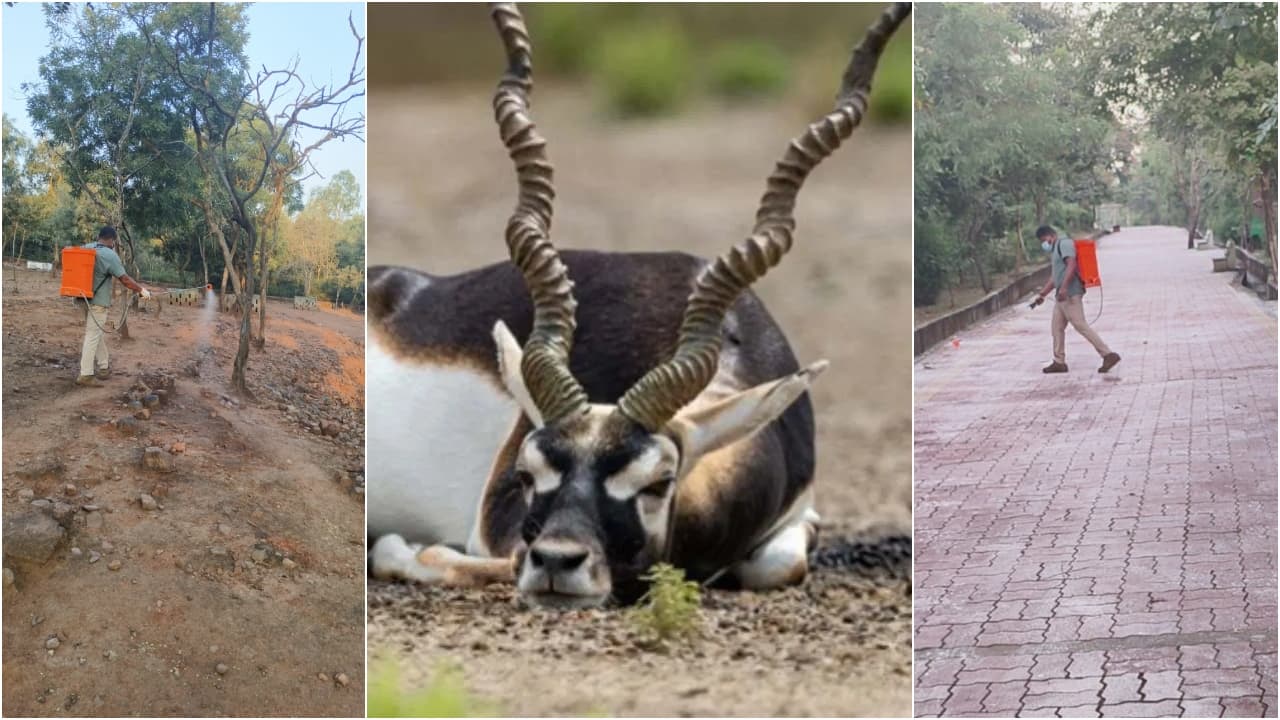Thirty-one blackbucks have died at Belagavi’s Rani Channamma Mini Zoo, with a NIVED alert on a possible HS outbreak allegedly ignored by key departments. Wildlife experts blame departmental negligence and demand urgent investigation.
Belagavi: The crisis at the Rani Channamma Mini Zoo in Bhootaramanahatti, Belagavi taluk, has deepened, with two more blackbucks dying on Monday morning after medical treatment failed to save them. With these latest fatalities, the death toll has climbed to 31, leaving only seven of the original 38 blackbucks alive. The situation has triggered widespread public concern, especially as early warnings about a possible outbreak were allegedly ignored by the relevant state departments.
Early Warning Was Issued Months Ago
The National Institute of Veterinary Epidemiology and Disease Informatics (NIVED), based in Yelahanka, Bengaluru, had issued a crucial alert to the Animal Husbandry Department three months ago. This communication warned of a high likelihood of an outbreak of Haemorrhagic Septicaemia (HS), a dangerous bacterial infection.
The Animal Husbandry Department subsequently forwarded this advisory to the Forest Department, state-run zoos and cattle-rearing farmers, specifically highlighting Belagavi and surrounding regions as high-risk zones.
Allegations of Negligence Against Two Departments
Despite receiving the warning, allegations have now emerged that both the Animal Husbandry Department and the Forest Department failed to take essential preventive measures. Wildlife experts and local observers claim that timely vaccination, active monitoring and preventive protocols could have averted the deaths, calling the tragedy a result of official negligence.
Post-Mortem Findings Strengthen Suspicions
The preliminary post-mortem examination of the recently deceased blackbucks revealed clear symptoms associated with Haemorrhagic Septicaemia. These findings further support suspicions that HS bacteria is the primary cause behind the serial deaths. While the warning issued by a national-level scientific institute is on record, the apparent failure of the concerned departments to act has angered wildlife enthusiasts and conservationists.
Concerns Surround Zoo Management
The chain of deaths has raised serious questions about the management of the mini zoo, which attracts visitors not only from Belagavi district but also from neighbouring Maharashtra and Goa. Officials have vaguely stated that a “bacterial virus” may be responsible, but clarity is still lacking. Wildlife lovers argue that the Forest Department staff and veterinarians should have been on high alert immediately after the first eight blackbucks died. Allegations of mismanagement, poor monitoring and irresponsible handling are gaining traction.
Current Situation and Containment Measures
Of the 38 blackbucks originally housed in the zoo, only seven are currently alive. A team of veterinarians from Bengaluru is stationed at the zoo and is closely monitoring the surviving animals. The enclosure where the deaths occurred has been cordoned off, green mats have been placed and public access has been restricted to prevent any possible spread of infection.
What Should Happen Next?
Nature lovers and environmental experts are now demanding urgent action, including:
- A thorough investigation into the functioning of both departments
- Intensive monitoring of blackbuck enclosures and habitats
- Immediate vaccination drives to prevent Haemorrhagic Septicaemia
- A detailed study by a national-level expert committee
They stress that only swift, transparent and scientifically guided measures can prevent further loss of wildlife and restore public confidence in zoo management.
